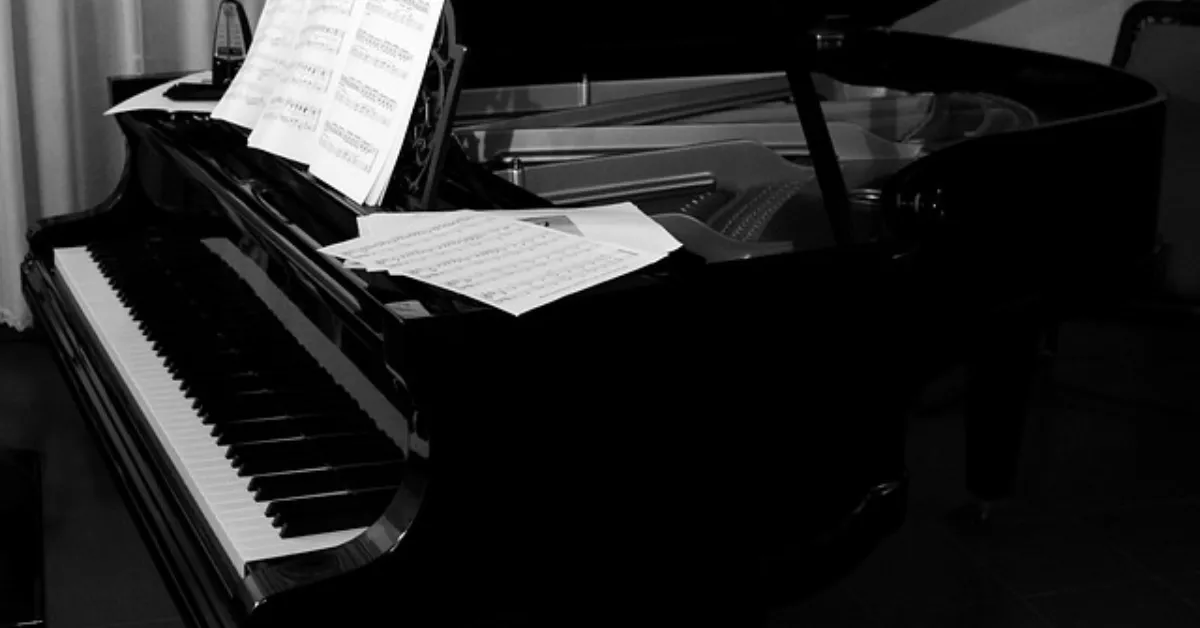How to Play the Piano for Beginners – Step-by-Step Indian Guide

Learning how to play the piano can be an incredibly rewarding experience, especially when you blend Western techniques with Indian musical styles. From the soothing melodies of ragas to the powerful chords of Bollywood hits, the piano is versatile and expressive. This step-by-step guide is designed especially for Indian beginners who wish to master the piano while keeping cultural context and musical roots in mind.
1. Understanding the Piano Keyboard
Before diving into playing, it’s essential to understand the layout of a standard piano keyboard.
- A standard keyboard has 88 keys: 52 white and 36 black.
- Notes repeat every 12 keys in an octave pattern.
- White keys represent natural notes (A, B, C, etc.), while black keys are sharps and flats.
Familiarize yourself with these patterns, especially the middle C, which is often your starting point.
2. Setting Up Your Piano or Keyboard at Home
For beginners in India, space and budget are major factors. Here’s what you can consider:
- Digital keyboards (61 or 76 keys) are affordable and beginner-friendly.
- Look for touch-sensitive keys, sustain pedal support, and Indian instrument sounds like sitar or tabla.
- Brands to consider: Yamaha PSR series, Casio CTK series, Roland GO series.
Set your piano near natural light, at an ergonomic height, with minimal distractions.
3. Finger Numbering and Hand Position
Before playing, you must learn finger positioning:
- Right-hand fingers: 1 (thumb) to 5 (pinky)
- Left-hand fingers: also 1 to 5, starting from thumb
Always curve your fingers naturally and keep your wrists relaxed. This technique is especially important while playing ragas or fast Bollywood melodies.
4. Learning the Musical Alphabet and Notes
The musical alphabet runs from A to G, and it repeats.
- The white keys go in this order: C-D-E-F-G-A-B
- Middle C is your anchor. Use it to start learning melodies and scales.
In Indian classical adaptation:
- Sa = C, Re = D, Ga = E, and so on (based on chosen scale)
You can label keys with stickers until you get comfortable.
5. Basic Indian and Western Scales to Learn First
Start with simple scales that are frequently used in both Indian and Western music:
- C Major Scale (C-D-E-F-G-A-B-C)
- Hindustani Raag Yaman (Kalyan thaat) on white keys using the Lydian mode
- Carnatic Raga Mayamalavagowla – great for finger training and swarasthana identification
Practice each scale with both hands separately, then together.
6. Practicing Simple Rhythmic Patterns (Taal and Beats)
Incorporate rhythm early:
- Use a metronome or tabla app to stay in rhythm.
- Practice with teen taal, ek taal, or even adi tala (Carnatic) depending on your music style.
- Clap and count the rhythm before playing melodies.
Rhythm mastery is essential in Indian compositions and bhajans.
7. Playing Basic Melodies and Bhajans
Start with simple songs:
- Saare Jahan Se Achha
- Raghupati Raghav Raja Ram
- Twinkle Twinkle Little Star (to understand note jumps)
- Jana Gana Mana (for both Indian and Western melody styles)
These help develop finger coordination, timing, and musical memory.
8. Introduction to Chords and Harmonies
Chords are groups of 3+ notes played together. They give fullness to your music.
- C Major chord: C-E-G
- G Major chord: G-B-D
- A minor chord: A-C-E
Use chords in bhajan backgrounds or Bollywood songs. Indian fusion music often blends chords with ragas for a unique soundscape.
9. How to Read and Use Indian Notation on Piano
Indian classical uses sargam notation: Sa Re Ga Ma Pa Dha Ni Sa.
- Associate Sa with any key (usually C for beginners).
- Identify komal (flat) and teevra (sharp) notes on black keys.
- Learn to map ragas like Raag Bhimpalasi, Desh, or Kafi to Western notes.
This knowledge bridges your Western piano with Indian melody styles.
10. Using Both Hands Together
Once you’re confident with scales and simple tunes, practice left-hand accompaniment:
- Play chords or bass notes with the left hand.
- Try simple patterns: LH holds C chord while RH plays melody on scale.
Indian-style left-hand use may involve holding drone-style Sa or Pa, like a shruti box effect.
11. Explore Indian Instrument Sounds on Digital Keyboards
Many keyboards come with Indian tone banks:
- Sounds include sitar, shehnai, tabla, mridangam, veena
- Use these to add cultural depth to compositions
- Combine piano sound (RH) and tabla loop (LH) for performances
This is especially great for solo acts or devotional events.
12. Recording and Listening to Your Practice
Recording helps monitor progress and identify errors.
- Use onboard recorders or mobile apps like BandLab, Soundtrap
- Listen for timing, wrong notes, or rushed transitions
- Replay to understand raga feel, taan clarity, or bhajan flow
Playback with a critical ear helps speed up improvement.
13. Practice Routine for Indian Beginners
Stick to a consistent, varied schedule:
- 10 min: Finger warm-up exercises (Hanons or Sa-Re-Ga drills)
- 10 min: Scales + ragas
- 10 min: Melody + bhajan or Bollywood song
- 10 min: Chords and hand coordination
Weekly add one new scale or rhythm. Practice with tanpura or tabla loops.
14. Learn From Indian Piano Artists
Follow these Indian piano influencers for motivation and learning:
- Stephen Devassy: Fusion pianist with Carnatic roots
- Anil Srinivasan: Expert in Carnatic piano adaptations
- Ricky Kej: Known for global fusion and piano compositions
Their videos often show how to adapt Indian melodies into piano-friendly forms.
15. Join Indian Piano Learning Communities
Learning with others boosts motivation:
- Join Facebook groups like “Indian Keyboardists & Pianists”
- Attend workshops and webinars by local music schools
- Take online classes from Indian-centric platforms like Acharyanet or Shankar Mahadevan Academy
Interacting with peers gives you feedback and performance ideas.
16. Choose the Right Books and Online Resources
Some excellent beginner resources include:
- Alfred’s Basic Piano Library
- Indian Raga Piano Tutorials on YouTube
- Carnatic Piano Notation PDFs from online learning sites
Print out Swarasthana charts, Western + Indian scale maps, and Taal guides to keep near your piano.
17. Performance and Improvisation Tips
Once you’re comfortable:
- Practice bhajan improvisation using ragas
- Perform small family events or online concerts
- Use Alaap + Tan patterns during intros
Improvisation builds confidence and creativity in Indian-style playing.
18. Common Mistakes to Avoid
- Skipping hand technique and posture
- Not practicing with rhythm or taal
- Ignoring Indian scale mapping
- Only playing Western songs and ignoring your cultural roots
Awareness of mistakes is the first step to mastery.
Conclusion
Learning how to play the piano: a step-by-step guide for beginners is more than just pressing keys—it’s about discovering an entirely new way of expressing yourself musically. For Indian learners, it’s an exciting opportunity to blend ancient ragas with modern harmonies. With the right approach, tools, and consistent effort, you can enjoy playing bhajans, film songs, classical pieces, and even composing your own Indian fusion melodies. Start your piano journey today—and let every note reflect your musical soul.
At NMS Musicals, we offer a comprehensive range of musical instruments, including percussion, string, wind, and keyboard instruments. Our services encompass sales, expert servicing, and the manufacture of leather instruments. Explore our diverse collection and find the perfect instrument to suit your musical needs.
Visit our website to browse our offerings: nmsmusicals.in
For a closer look at our products, check out our shop page: nmsmusicals.in/shop
Stay connected with us through our social media channels:
- Facebook: https://www.facebook.com/nmsmusicalinstruments/
- Instagram: https://www.instagram.com/nmsmusicals/?hl=en
- YouTube: youtube.com/@nmsmusicals
Our shop locations are:
- Puducherry: 149, Perumal Koil Street, Heritage Town, Puducherry, 605001.
Map Link: https://maps.app.goo.gl/ejDwBBFEJmd3szxk7 - Chennai: No: 1, 1st Floor, Kandigai Street, TVS Nagar, Korattur, Chennai – 600076.
Map Link: https://maps.app.goo.gl/7oXmB6X7KQsqeuuw9
For inquiries, contact/Whatsapp us at 9500663895 or email us at laxman.m89@gmail.com.
Discover the world of musical instruments with NMS Musicals today!
For a visual overview of our percussion instruments, watch the following video:


 Cart is empty
Cart is empty 
Leave A Comment
You must be logged in to post a comment